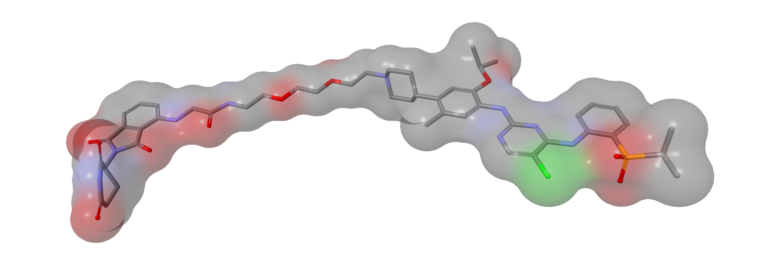In the ever-evolving landscape of drug discovery, innovative entities like PROTACs and molecular glues are reshaping the way we approach therapeutic development. These groundbreaking technologies influence protein degradation processes, offering novel avenues for researchers and scientists.
PROTACs Unveiled: A Precision Approach to Protein Degradation
A Proteolysis Targeting Chimera (PROTAC) is not just a molecule; it’s a game-changer. With two active domains intricately connected by a linker, PROTACs operate on a different wavelength compared to traditional enzyme inhibitors. Their unique mechanism involves selective intracellular proteolysis, bringing about the targeted removal of specific undesirable proteins. By engaging an E3 ubiquitin ligase on one end and binding to a designated target protein on the other, PROTACs usher in a new era of effective drug discovery.
Molecular Glues: Bridging the Gap in Therapeutic Interventions
Enter molecular glues – a transformative paradigm in drug development. These agents offer a versatile approach to modulating protein-protein interactions, going beyond the conventional scope of small-molecule drugs. Molecular glues bridge and stabilize interactions between proteins without specific binding pockets, enabling precise and controlled changes in protein interactions. This unique mechanism allows researchers to explore innovative strategies for tackling diseases that were once challenging to address using traditional drug discovery methods.

Figure 1: An example of a molecular glue, 5-hydroxythalidomide
BIOVIA’s Role in Advancing Chemistry Data Representation
In this era of innovation, BIOVIA stands as a pioneer in advancing chemistry data representation. With tools like BIOVIA Direct and BIOVIA Pipeline Pilot, the company contributes significantly to the scientific community’s arsenal of cutting-edge informatics environments. BIOVIA Chemistry, equipped with features to sketch, store, and retrieve complex molecules, including PROTACs and molecular glues, takes center stage in providing comprehensive support for diverse research needs.
Sketching Sequences and Structures: BIOVIA’s Distinctive Offerings
BIOVIA Draw and BIOVIA Pipette Sketcher are the tools for scientists to sketch molecules, reactions, and sequences with precision. BIOVIA Draw, a customizable desktop application, and BIOVIA Pipette Sketcher, a modern web-based sketcher, ensure a seamless and accurate experience for scientists in constructing and representing molecular entities.
But what sets BIOVIA apart is its ability to not only handle small molecules and reactions, but also to store and retrieve complex sequence information alongside them. The Self-Contained Sequence Representation (SCSR) allows for the management of very large molecules, providing scientists with quick access to sequences based on natural or custom-built residues, which may also contain any of the following: terminal attachments, bridging, linkers, payloads, mutations and modifications.
BIOVIA allows scientists to construct these large sequences with BIOVIA’s sketchers. These are automatically synchronized with BIOVIA’s “Centralized Library” (a client handled library of natural and custom residues for amino and nucleic acids, linkers and attachments) always ensuring that all scientists use the latest standard set of building blocks when sketching their sequences.

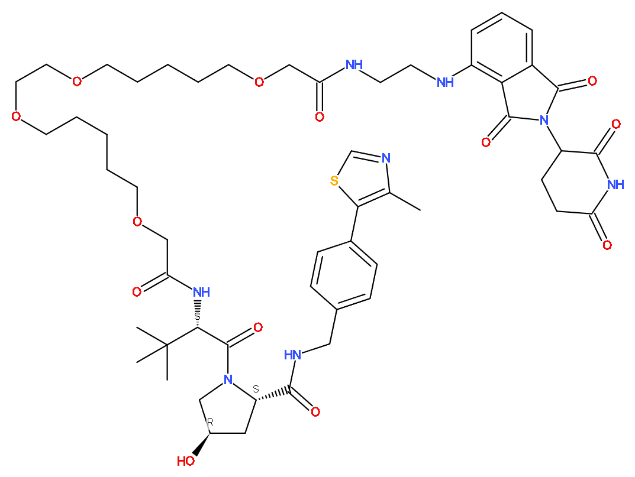
Figure 2: CBRN Protac 14a, sketched using BIOVIA Draw (top – with terminal hydrogens turned off) and BIOVIA Pipette Sketcher (bottom – with chiral labels displayed)
Materials Management: A Cloud-Based Revolution in Capturing Materials
BIOVIA’s new cloud-based system for capturing proprietary and commercially sourced materials enables you to rapidly define, identify, and locate any chemical or biological material.
It provides many templates out-of-the-box to represent commonly used entities, including chemical compounds, cell lines, and monoclonal antibodies. Materials Management enables you to capture simple materials by defining them composed of a single constituent as well as more complex entities made up of multiple constituents such as mixtures and formulations.
How would we represent PROTACs and molecular glues using this system?
Most materials destined for ultimate delivery as therapeutic agents start their lives with a relatively simplistic, conceptual representation designed to support the early characterization and optimization work that typically occurs in discovery. To support early discovery, we can capture molecular glue and PROTAC candidates as chemical compound substances. Let us look at an example.
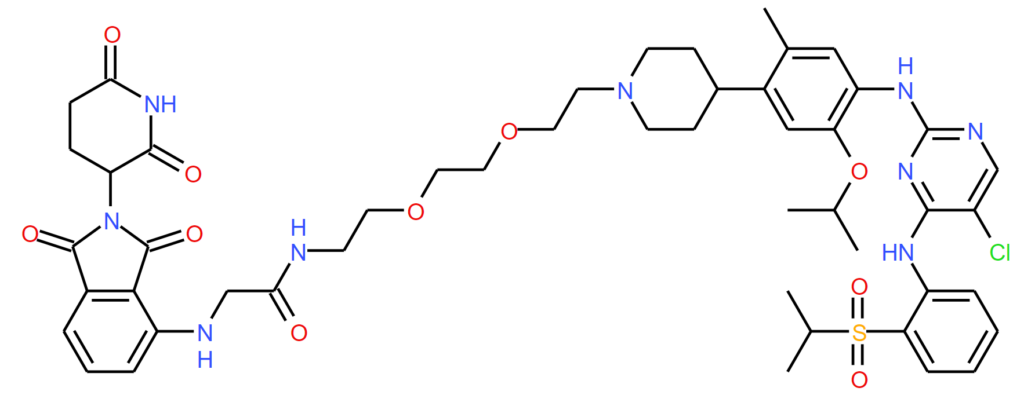
Figure 3: The chemical structure of TL13-112, a selective and potent anaplastic lymphoma kinase (ALK) PROTAC degrader. It is a conjugation of Ceritinib (LDK378) and the Cereblon ligand of Pomalidomide (CC-4047).
Materials Management in Action
To support discovery science, we can capture a molecule like TL13-112 as a substance. Registration of TL13-112 will result in the system automatically computing a compound identity for the molecule based on its chemical structure, as well as a parent identification, useful to group molecular salt forms together. Materials Management will also assign a corporate identifier to the substance.

Figure 4: TL13-112 captured as a compound substance. The corporate ID assigned to the molecule is visible in the tile at the top of the screen (DSX0001002). The identifications, automatically computed by Materials Management are shown at the bottom. Molecular weight, IUPAC name, and molecular formula are also computed automatically.
Molecular glues can be represented in the same way. For example, we can register Indisulam, a molecular glue that induces proteosomal degradation of the mRNA splicing factor RBM39 to suppress cellular proliferation as a substance.
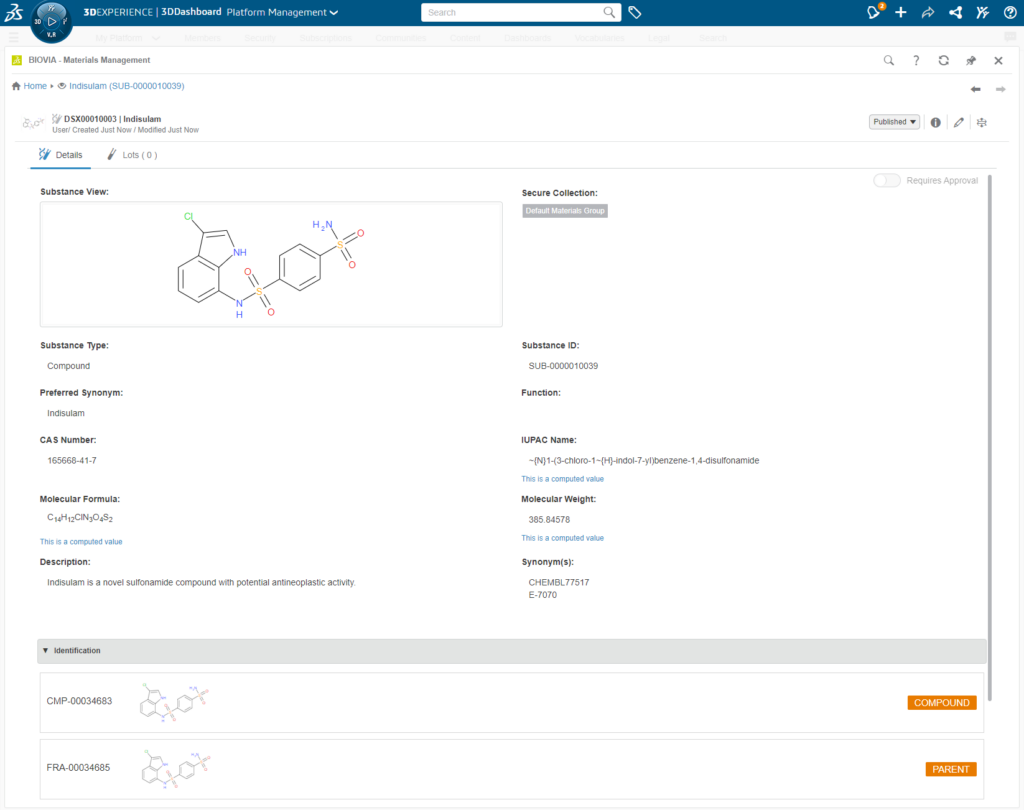
Figure 5: Indisulam captured as a compound substance.
We can use material, lot, and container records to capture detailed information about a real physical instance of Indisulam. The use of these records enables us to capture physical properties, supplier information, quantity, storage details, and composition; the latter defined via the use of substances, including the one we defined earlier.
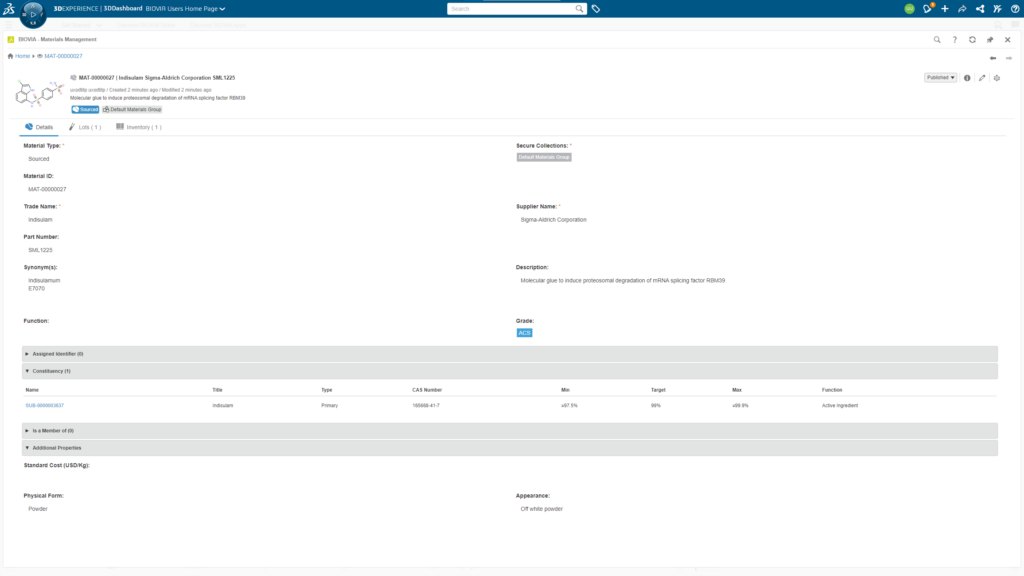
Figure 6: Indisulam, captured as a sourced material showing supplier information, physical property and constituency information. Information about the available quantity and location is available under the Lots and Inventory tabs on the form.
From a single application then, a complete representation of molecular glues such as Indisulam and PROTACS like TL13-112 can be captured to support workflows in discovery, development, and beyond.
Deeper Insights through the Power of Modeling and Simulation
Modeling and Simulation play a pivotal role in the design of innovative therapeutics by eliminating the necessity for prior knowledge. These powerful tools empower researchers to explore and assess novel classes of therapeutic compounds with a level of flexibility and efficiency not achievable through traditional methods. By leveraging Modeling and Simulation, scientists can delve into the intricate world of molecular structures, evaluating the three-dimensional configurations, analyzing various conformations, and modeling interactions with host structures.
This approach not only expedites the drug discovery process but also allows for a more comprehensive exploration of potential therapeutic candidates. Researchers can gain valuable insights into the dynamic behavior of molecules, enabling a deeper understanding of their interactions at a molecular level. Moreover, Modeling and Simulation techniques enable the exploration of diverse structural possibilities, paving the way for the identification and design of therapeutics with enhanced efficacy and specificity.
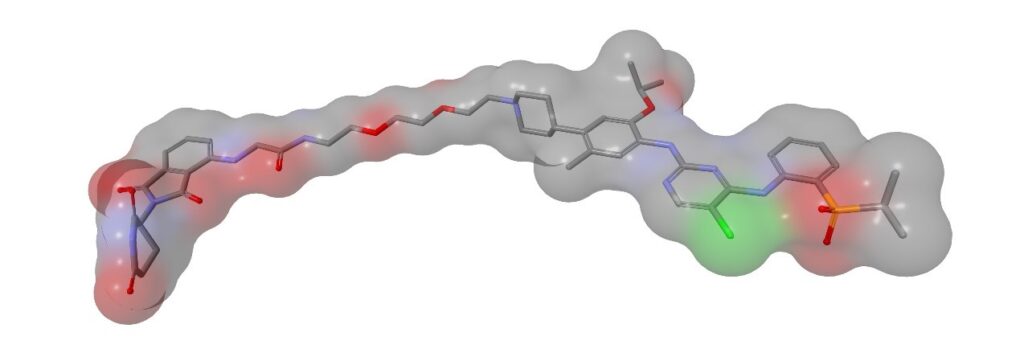
Figure 7: Discovery Studio Simulation is a cloud-based modeling and simulation solution. Shown is a 3D representation of TL13-112 with a molecular surface colored by the corresponding element type.
Navigating Drug Discovery with BIOVIA in the Cloud
The drug discovery landscape is swiftly changing, demanding adaptable solutions to meet evolving challenges. With decades of experience, BIOVIA has been a steadfast guide for customers in scientific pursuits. Now, transitioning our proven solutions into the cloud, we reaffirm our commitment to innovation. In this dynamic industry, flexibility is key. Connect with BIOVIA to explore how our platform, designed to evolve with your needs, can be your compass in navigating discovery research in this new age.
